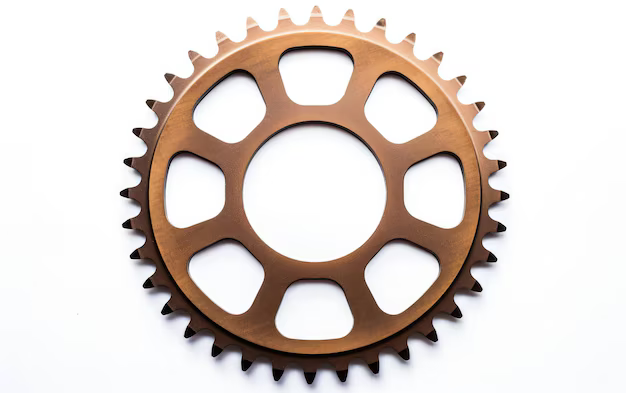- Home
- Our Products
- Under Carriage & G.E.T.
- Sprocket

Description
Sprockets are essential mechanical components used in various types of machinery and equipment to transmit rotational motion and power between shafts through a chain or belt. They consist of a toothed wheel that engages with the chain’s links, ensuring smooth and efficient movement. Sprockets are commonly used in applications such as bicycles, motorcycles, industrial conveyors, and automotive systems. They come in various sizes, tooth configurations, and materials, including steel, aluminum, and plastic, each chosen based on factors like load requirements, speed, and environmental conditions. Proper alignment and tension of the chain are crucial for optimal sprocket performance and to prevent premature wear. Regular maintenance, including inspection of the teeth for wear and checking for proper lubrication, is essential to ensure the longevity and efficiency of sprockets. By facilitating the transfer of motion and power, sprockets play a vital role in the reliability and functionality of numerous mechanical systems and machinery.
Industry Used
FAQ
A sprocket is a wheel with teeth that meshes with a chain, track, or other perforated or indented materials to transmit rotary motion. Sprockets are commonly used in machinery, bicycles, motorcycles, conveyor systems, and industrial equipment.
There are several types of sprockets, including roller chain sprockets, ladder sprockets, conveyor sprockets, and engineering class sprockets. Each type is designed for specific applications and chain types.
Consider factors such as the type and size of the chain, the required number of teeth, the bore size, and the material of the sprocket. The selection should be based on the specific requirements of your application, such as load capacity, speed, and environmental conditions.
Sprockets are commonly made from materials like carbon steel, stainless steel, cast iron, and nylon. The choice of material depends on the application, environmental conditions (such as exposure to moisture or chemicals), and the desired durability.
Regular maintenance includes inspecting for wear and tear, checking alignment, ensuring proper lubrication of the chain and sprocket, and replacing any worn or damaged components. Proper maintenance helps extend the sprocket's lifespan and ensures optimal performance.
Sprocket wear is primarily caused by misalignment, lack of lubrication, excessive loads, and improper tension of the chain. To minimize wear, ensure proper installation, maintain alignment, use the correct lubricant, and avoid overloading the sprocket.
Yes, sprockets can be customized in terms of size, tooth count, material, and bore type to meet specific application requirements. Contact us to discuss your needs and explore custom sprocket solutions.
If you notice issues such as noise, excessive wear, or irregular movement, check for common problems like misalignment, inadequate lubrication, or damaged teeth. Refer to the sprocket’s manual for troubleshooting tips or contact our service team for professional assistance.
Proper installation involves aligning the sprocket with the chain, ensuring correct tension, and securely fastening it to the shaft or hub. Follow the manufacturer’s instructions to ensure a proper fit and avoid premature wear or damage.
Sprockets are used in various applications such as bicycles and motorcycles, conveyors, agricultural machinery, industrial equipment, and other mechanical systems where chain-driven power transmission is required.

